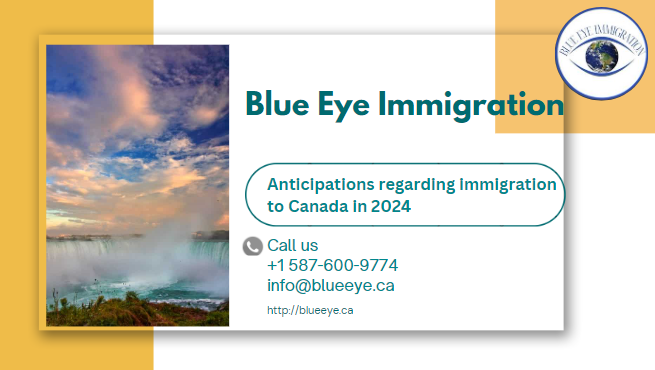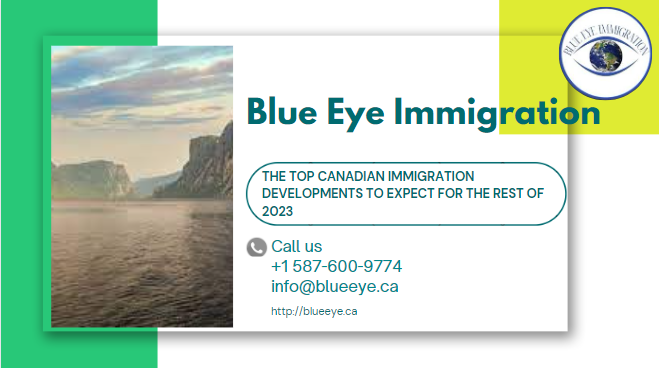A number of initiatives have been started by Immigration, Refugees and Citizenship Canada (IRCC) that will impact all new immigrants to Canada in 2024.
The Immigration Levels Plan for 2024–2026 states that Canada intends to admit 485,000 permanent residents (PRs) in total year 2024. In addition to these increasing immigration levels, Canada is anticipated to provide program improvements and use artificial intelligence (AI) to improve customer service.
Modifications to the Express Entry Program
The IRCC started holding category-based Express Entry drawings in 2023. These draws were put in place to assist Canada in identifying foreign nationals who would be most qualified to fill the most urgent labor shortages and meet its demographic requirements.
The IRCC decided to give priority to the following categories of immigration candidates in the first year of category-based draws.
- Individuals who are fluent in French
- Individuals having recent employment history in any of the five sectors listed below: Trades, Transportation, Agri-Food/Agriculture, Science, Engineering, Technology, and Mathematics (STEM); Healthcare
The IRCC is anticipated to go on with category-based drawings in 2024. The department has, however, stated unequivocally that, in light of the evolving demands of Canada’s labor market, they will review and perhaps modify the emphasis areas selected for 2023. This implies that the IRCC may select new industries and skill sets as areas of concentration, which might open up new immigrant categories for category-based Express Entry drawings in the upcoming year.
Guidelines for the New Provincial Nominee Program
Provincial Nominee Programs (PNPs) are immigration routes that give local governments the ability to personally choose applicants who would most effectively assist them in filling labor shortages. In 2024, PNPs are expected to be the nation’s largest immigration channel (based on immigration objectives) according to the IRCC’s most recent Immigration Levels Plan.
The updated list of PNP guiding principles that the provinces received is described here.
Beginning in 2024, the IRCC will also be releasing new multi-year plans for the PNP. Because they will know their allocation for 2025 a year ahead of time, this will help provinces and territories plan their immigration plans more effectively.
When considered collectively, these recent PNP changes indicate that, thanks to improved planning by each regional administration, potential immigrants using this immigration channel should have a better understanding of their alternatives for settling in the province or territory of their choosing.
Additional spots available for the Parents and Grandparents Program
Through the Parents and Grandparents Program (PGP), Canada aims to welcome 28,5000 immigrants in 2023.
According to the most recent Immigration Levels Plan, PGP objectives are expected to increase to 32,000 by 2024. More PGP candidates should be allowed to enter Canada in the upcoming year if the IRCC is successful in enhancing “intake management and the alignment of [application] inputs and outputs.”
Improvements to the International Student Program in Canada
The Immigration, Refugee and Citizenship Commission of Canada (IRCC) has implemented a revised Letter of Acceptance (LOA) verification mechanism that will affect all applications for study permits in order to enhance the integrity of the program across the country and better safeguard incoming foreign individuals.
Designated Learning Institutions (DLIs) in Canada are now “mandatory to verify every applicant’s letter of acceptance directly with IRCC,” as of December 1. According to the government, this “new, enhanced verification process aims to ensure that study permits are issued based only on genuine LOAs while protecting prospective students from fraud.”
Additionally, the IRCC declared in November that the government will be reviewing the Post-Graduation Work Permit (PGWP) program until 2024. Due to the PGWP’s favorable treatment of Canadian work experience in the Comprehensive Ranking System (CRS) score, many overseas students who want to apply for PR benefit from it.
“Introducing reforms [that] better calibrate the [PGWP] to the needs of the country’s labor market, as well as regional and Francophone immigration goals,” is what the IRCC is required to do as a consequence of this assessment.
More: Keep track of upcoming articles about these and other significant changes that will affect Canada’s student population of foreign nationals in 2024.
Next year, there will be more modifications to immigration to Canada.
The IRCC has pledged to implement a number of additional measures aimed at enhancing the lives and experiences of recent Canadian immigrants as they navigate the immigration system.
Using technology and AI more frequently
By 2024, the IRCC hopes to “out-compete other countries for talent” by advancing the use of AI and technology in immigration. With the support of this project, Canada hopes to accomplish its immigration and diversity goals while also shortening processing times and providing IRCC officials with better tools.
In particular, this digital revolution will enhance the immigration applicants’ customer experience in a number of ways, such as but not restricted to:
- raising the bar for services
- tackling fraud and bolstering worker and student rights while fortifying alliances with businesses and organizations that depend on immigration
- Enhancing applications’ usability through the utilization of digital and virtual technology
Note: This page details the many changes that are a part of Canada’s Digital Platform Modernization effort.
A new advisory board for the IRCC
In addition, the IRCC will create a new advisory group to concentrate on issues concerning immigration law and service provision. This board is special because it will include individuals “with lived experience in immigration,” giving recent immigrants more influence over policies and procedures that impact them. “Strengthen policy and program development [while ensuring that Canada’s immigration system remains anchored] in a human-centric approach” is the stated goal of this new advisory group.
The Chief International Talent Officer’s introduction
Lastly, the Chief International Talent Officer (CITO), a brand-new position, will be announced by Canada’s immigration department. Their main duty is to make the nation’s immigration policy more in line with sectoral and national labor market plans.
“The responsibilities of [this individual] entails the ability to affect a huge amount of change in Canada’s annual immigration,” the government states. After someone is selected, prospective immigrants to this nation in 2024 and beyond should keep an eye on events.



